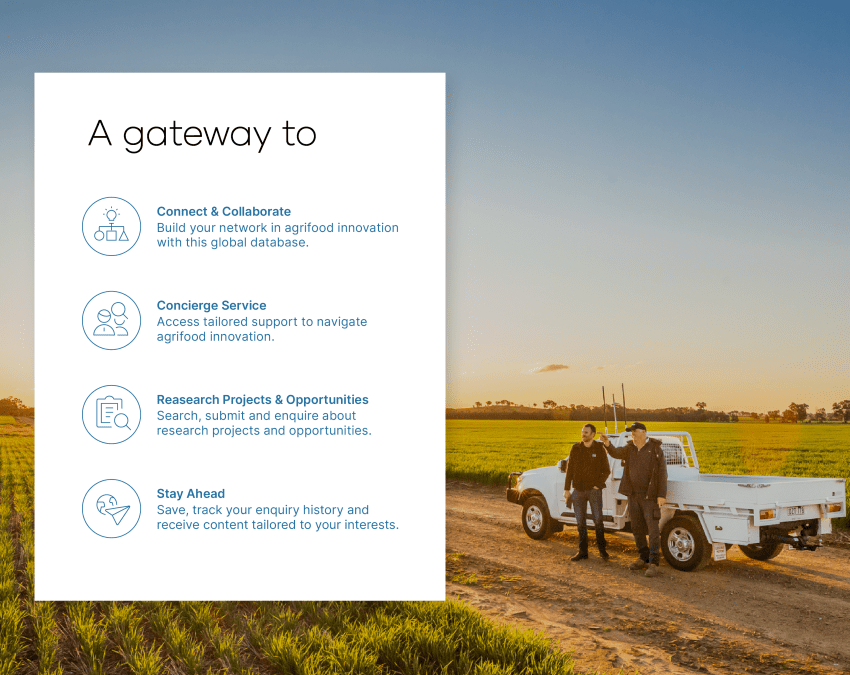
Tackling a hot topic
Heat stress is a complex and on-going issue for the livestock export industry. Many factors influence risk, including that some animals – like humans – are affected by heat more or less than others in the same conditions.
LiveCorp has taken a novel, Open Innovation, approach to fast-track its latest search for solutions.
-crop-1185x680.jpg)
The concept of Open Innovation is to look outside an organisation, and even an industry, to bring in fresh ideas. To help tackle the risk of heat stress on livestock export ships, LiveCorp brought in an agtech company that specialises in challenge-led innovation, to tap into its global network across a range of industries.
The project started with a working group of exporters to confirm the question LiveCorp needed to answer. Then a worldwide search identified and shortlisted different ‘detection’ and ‘response’ technologies with the potential to be part of a solution, including:
- Dehumidification
- Targeted rapid cooling spray
- Automated environmental monitoring (temperature, humidity and volatile gases)
- Weather data and route optimisation.
LiveCorp received a grant of $2.2 million from the Commonwealth Government to accelerate a trial of the dehumidification technology. Air conditioning was not considered, as humidity is often more of a significant factor than absolute temperature for sheep to be comfortable. High relative humidity means less evaporation of water (and therefore heat) from the body.
Livestock ships currently use high airflow and turnover to draw off the heat produced by the animals themselves, and to remove carbon dioxide, ammonia and any other gases in the air. In contrast, human air conditioning works on slow air movement.
To achieve the best welfare outcomes, livestock also need the opportunity to acclimatise as they travel. Reducing temperature and humidity by a few degrees may provide a benefit, but you do not want to go too far – think about getting out of the car in hot weather after having the air conditioning running on full.
The trial of the dehumidification technology involved units set up on a wharf in the Middle East. Dehumidified air was piped into several closed decks of a ship tied alongside, at different rates and with various combinations of the ship’s fans over several days.
Sensors measured temperature and humidity – which were allowed to return to ‘normal’ in between each test – as well as air speed. Specialists in thermodynamics, technology providers, and other experts in research design were on hand to ensure the best and most practical methodologies were employed to design and run the trial.
There were no sheep involved in the trial. It would not have been responsible to go straight to a trial involving live animals without evidence there would be minimal risk to them. On top of this, the trial involved a lot of movement around the decks, which would have been stressful for any sheep in that area.
It was much safer, and provided a lot more flexibility around turning fans and dehumidification units on and off, to use an empty ship.
The dehumidification trial captured a lot of quality data, which was analysed to see what impact the units had on temperature and humidity under the various testing scenarios. It also allowed analysis of the all important wet-bulb temperature, a relationship between ambient temperature and relative humidity which takes into account the cooling effect of evaporation.
The analysis showed the dehumidification technology can be effective in reducing temperature and humidity, but not at the level that makes it a practical solution at the moment. Modelling to add sheep into the equation shows you would need technology able to deliver around three times as much dry air to remain effective, as the animals themselves generate heat.
The industry currently uses highly effective ventilation systems to blow fresh air through the decks to draw away heat as well as carbon dioxide and ammonia. The model shows dehumidification can be more effective than the fans alone at higher temperatures, but there’s no way a vessel could carry the number of units that would be required for all decks.
While the project hasn’t provided an immediate solution, it will provide enduring value to the industry and guide future investment into heat stress management.
Related organisations

-crop-850x675.png)
Looking for engagement?
Showcase your commercialisation opportunity today.
Talk to our team to discuss how growAG. can connect your innovation to industry.
Have questions? Find answers to our most frequently asked questions on research projects, commercial opportunities, organisations and more.
